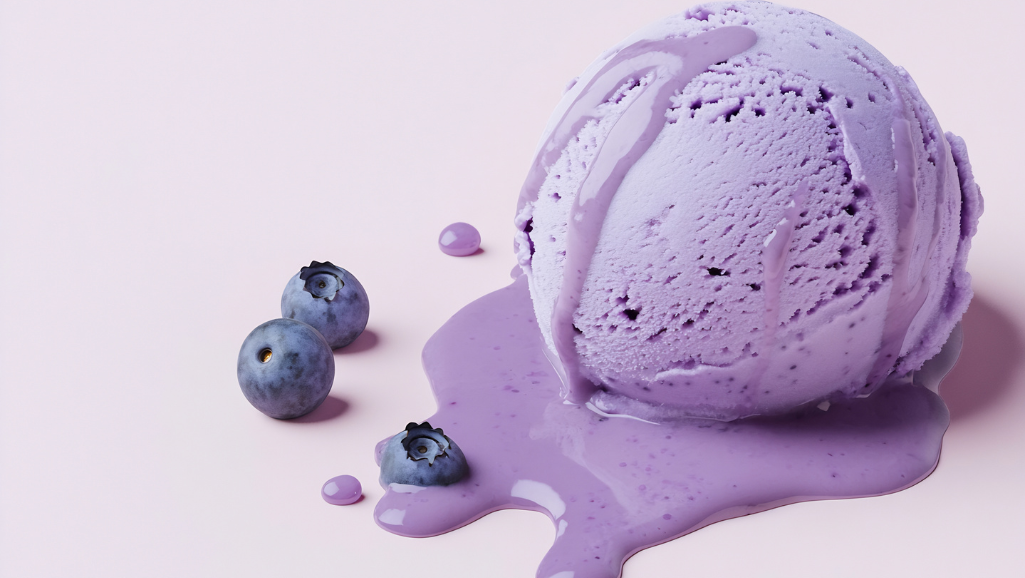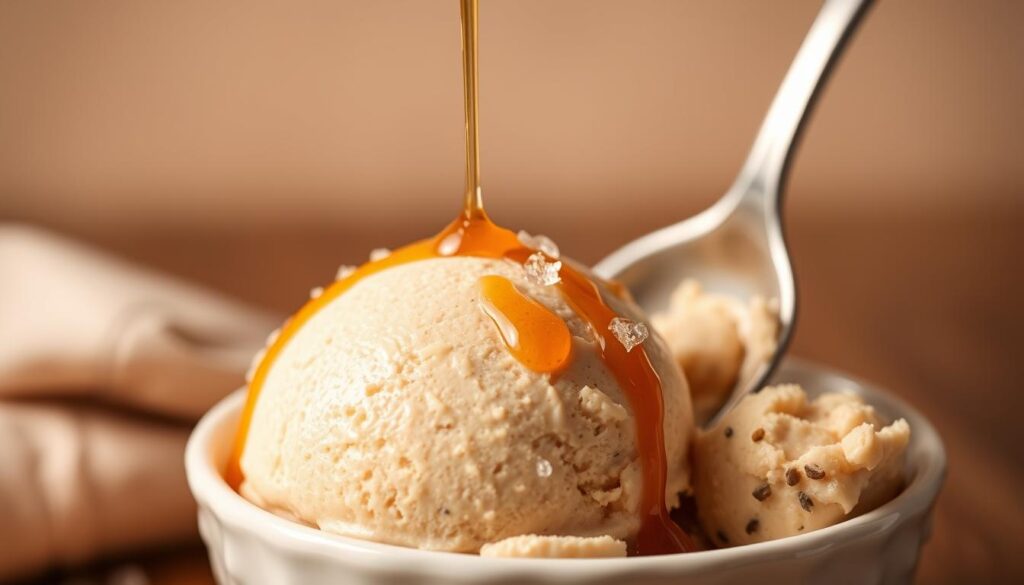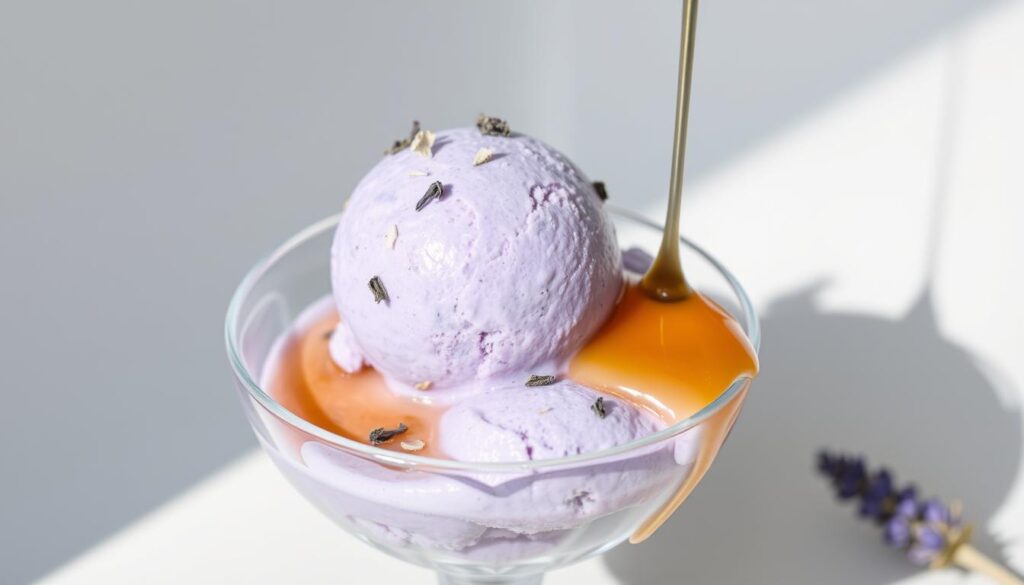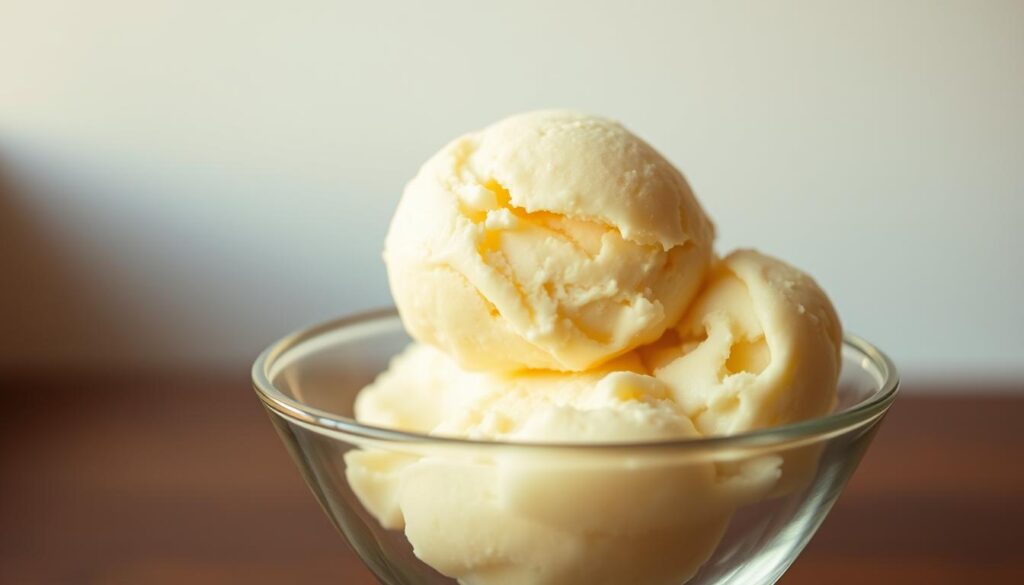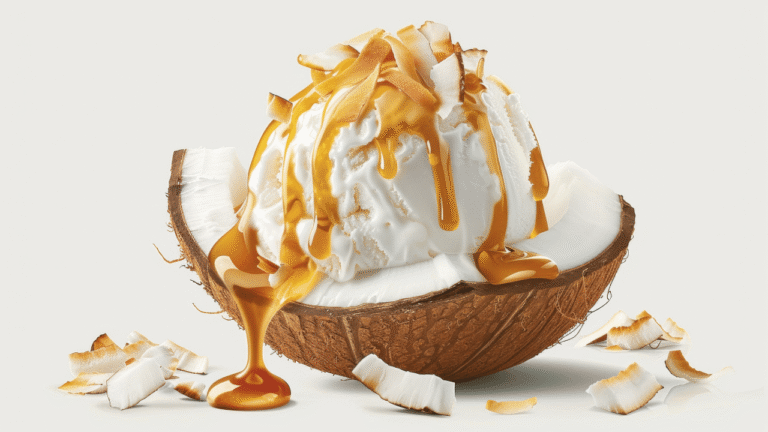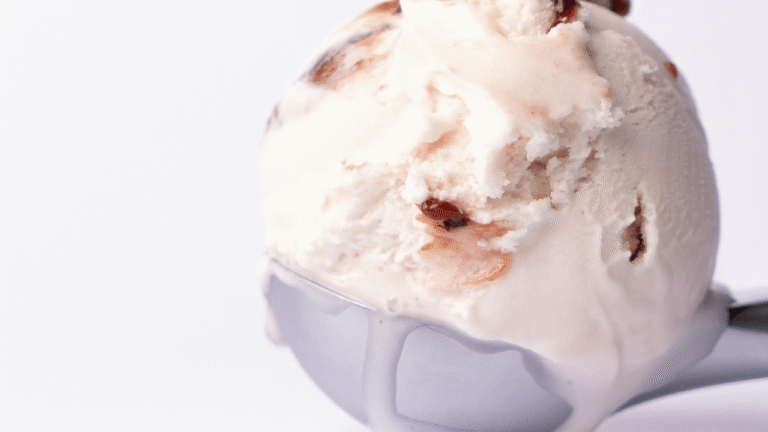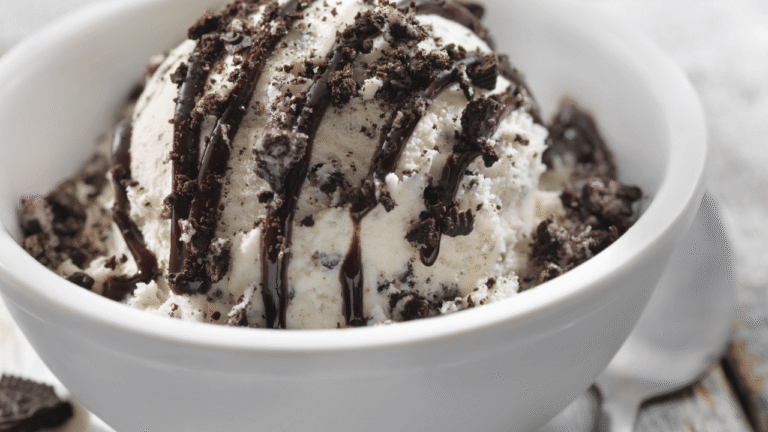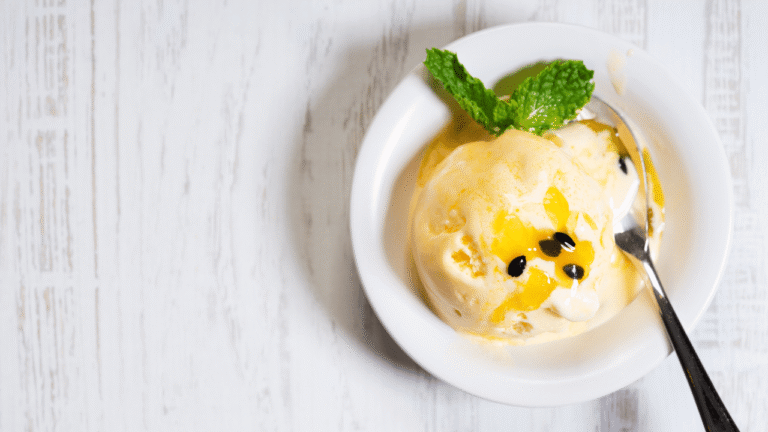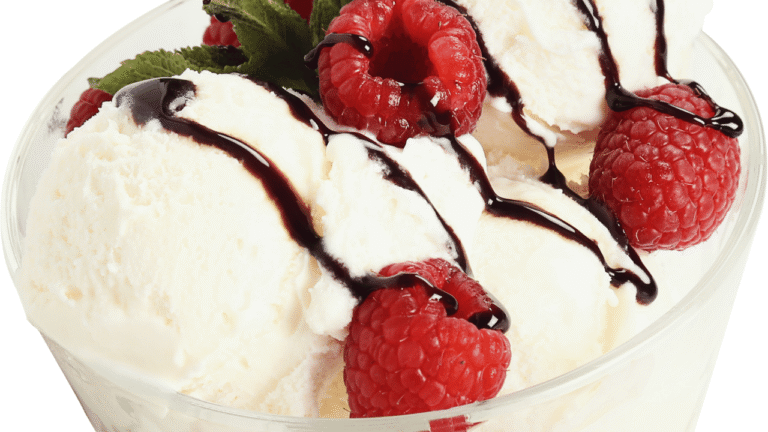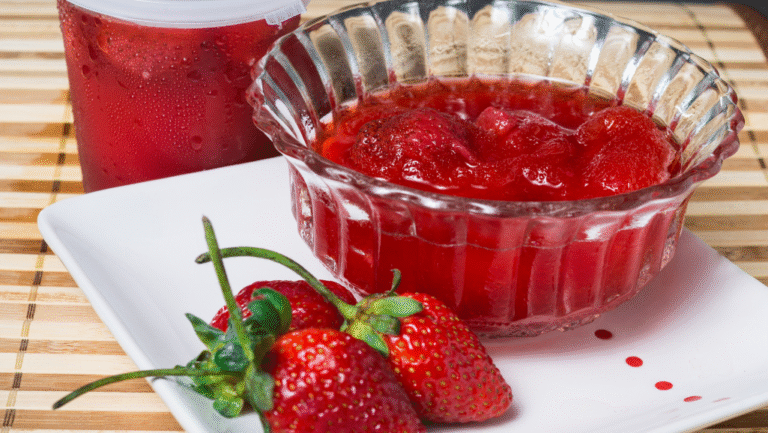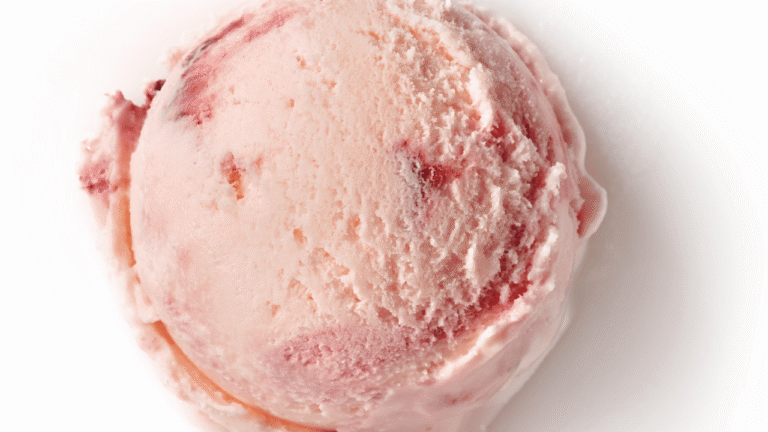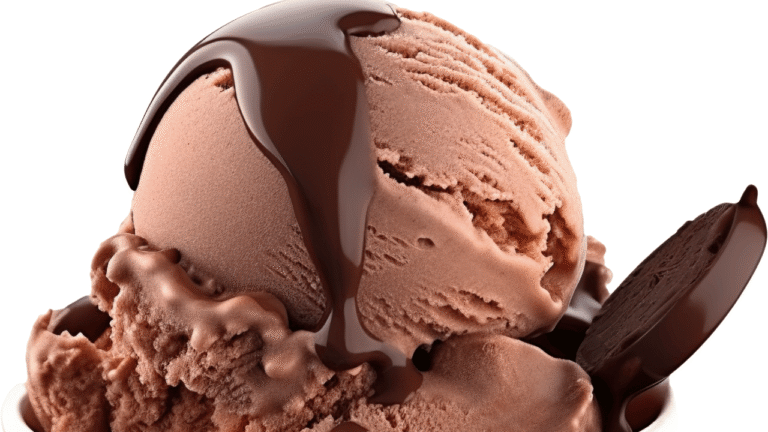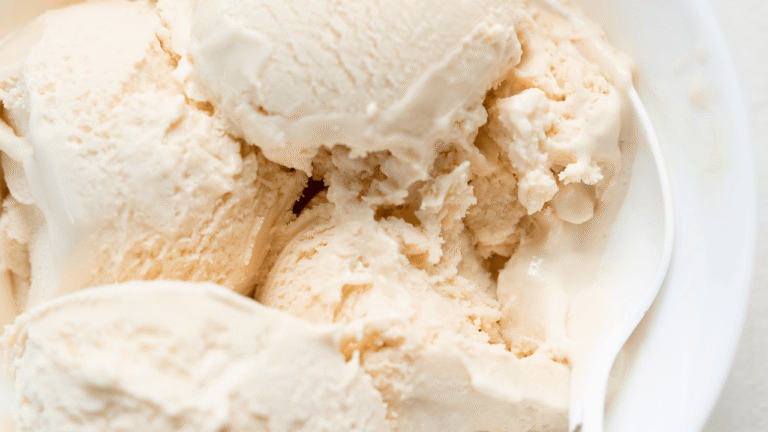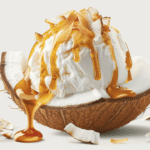Turn high-protein bases into silky, scoopable desserts with a compact machine that lives on your counter and in your routine.
With simple settings like Lite Ice Cream, Re-Spin, and Mix-in, you can craft pints that feel indulgent but match your goals.
Sample tested pints show real results: combinations using Fairlife, Greek yogurt, whey, or cottage cheese hit wide macro ranges. Calories can run from roughly 181 to 449 depending on base and add-ins, while protein spans about 14 g up to 86 g in some mixes.
Prep is easy. Freeze your base on a level surface, spin, then re-spin with 1–2 oz of milk if texture needs smoothing. Add mix-ins to customize flavor and mouthfeel.
Ready to explore recipes and tested macro ranges? Check curated options at the best Ninja Creami protein ice cream to jumpstart your batch prep.
Key Takeaways
- Use Lite Ice Cream, Re-Spin, and Mix-in settings for a silky finish.
- Fairlife, Greek yogurt, whey, and cottage cheese deliver varied calories and protein targets.
- Freeze on a level surface, then add 1–2 oz milk for smoother re-spins.
- Smart add-ins (pudding mix, collagen) boost texture and flavor without excess calories.
- Batch prep saves time and keeps healthy dessert options ready all week.
Why This Protein Ice Cream Belongs in Your Daily Routine
Swapping a sugary sundae for a high-protein pint can change how you approach dessert every day. A full chocolate pint made with Fairlife, whey, banana, cocoa, and low-calorie sweetener clocks around 311 calories and delivers about 41 g protein. That shows dessert can support goals, not sabotage them.
Many tested pints range from roughly 39–86 g of protein depending on your base. That flexibility makes these recipes reliable for meal planning and recovery.
Short on time? Whisk or blend a base, freeze it flat, and let the machine spin when you’re ready. The process is repeatable, so flavor stays exciting and results stay consistent.
- Swap sugary treats for a muscle-friendly alternative that still satisfies cravings.
- Enjoy a full pint near 300 calories with about 40 g of protein—dessert becomes part of a balanced day.
- Use steady macros to plan meals and adjust fat or carbs via base choices.
“A high-protein scoop can curb hunger more effectively than traditional ice cream.”
Ninja Creami Protein Ice Cream
4
servings30
minutes40
minutes300
kcal1
hour10
minutesA delicious and easy protein ice cream recipe perfect for beginners.
Keep the screen of your device on
Ingredients
1 cup 1 plain Greek yogurt
1 cup 1 milk
1/2 cup 1/2 vanilla protein powder
2 tablespoons 2 honey
1 teaspoon 1 vanilla extract
Directions
- In a mixing bowl, whisk together Greek yogurt, milk, protein powder, honey, and vanilla extract until smooth and fully combined.
- Pour the mixture into a resealable container and cover with an airtight lid to prevent freezer burn.
- Place the container in the freezer for at least 4 hours, or until the mixture is completely frozen.
- Remove the container from the freezer and let it sit for about 10 minutes to soften slightly.
- Transfer the frozen mixture into your ice cream maker and churn according to the manufacturer's instructions, typically about 20-25 minutes.
- Once churned, serve immediately for a soft-serve consistency or transfer to a lidded container and freeze for another hour for a firmer texture.
Nutrition Facts
- Total number of serves: 4
- Calories: 180kcal
- Cholesterol: 15mg
- Sodium: 60mg
- Potassium: 240mg
- Sugar: 12g
- Protein: 15g
- Calcium: 150mg
- Iron: 0.5mg
- Thiamin: 0mg
- Riboflavin: 0mg
- Niacin: 0mg
- Folate: 0mg
- Biotin: 0mg
- Phosphorus: 100mg
- Iodine: 0mg
- Magnesium: 20mg
- Zinc: 0mg
- Selenium: 0mg
- Copper: 0mg
- Manganese: 0mg
- Chromium: 0mg
- Molybdenum: 0mg
- Chloride: 0mg
Did you make this recipe?
Tag @https://www.instagram.com/ice_cream_haven/ on Instagram and hashtag it with #IceCreamIceCreamHavens
Like this recipe?
Follow @https://www.pinterest.com/Ice_Cream_Haven/ on Pinterest
Join our Facebook Group!
Follow https://www.facebook.com/icecreamhavens/ on Facebook
Tools You’ll Need: Ninja Creami, Frother, and Optional Blender
With the right kit you can batch several flavors in one kitchen session. This section lists the small tools that save time and deliver consistent results for every recipe.
Key machine settings to use
Lite Ice Cream gives the silkiest churn. Use Re-Spin when texture comes out powdery or stiff — add 1–2 oz of milk and spin again.
Mix-in folds chips, nuts, or cookie bits without turning the pint to mush.
Batch prep and small helpers
- Keep extra pint cups so you can freeze 4–5 flavors flat on a level shelf for faster weekly prep.
- A handheld frother speeds dissolving powders and pudding mix to avoid clumps in the base.
- Use a blender for cottage cheese or fruit bases to create an even starting texture before spinning.
- Simple kit: pint, lid, spoon for the mix-in tunnel, and a small measuring cup for re-spin liquid.
“Prep once, enjoy fresh scoops all week.”
The High-Protein Ice Cream Base: Core Ingredients for Creamy Results
The foundation you pick dictates how creamy, dense, and protein-packed each pint will be. Start by deciding whether you want higher protein or lower calories, then pick your liquid and dairy accordingly.
Milk and milk substitutes
Fairlife gives real body and extra protein. Almond or coconut milk cuts calories while keeping a smooth base. Greek yogurt and cottage cheese thicken the mix for a richer mouthfeel.
Protein powder choices
Unflavored whey or grass-fed mixes blend cleanly and let you control taste. Vanilla protein powder or chocolate varieties add sweetness and depth without extra sugar.
Sweeteners that work
Use stevia or monk fruit blends to lower calories, or add honey or maple for natural sweetness and more complex flavor. A pinch of salt and cocoa powder or vanilla extract bring balance.
- Pick a base that matches your goal: Fairlife for bulk, almond for lightness.
- Choose powder that dissolves well to avoid grit.
- Keep ingredients focused so results stay predictable.
“Document your favorite combinations so you can repeat and scale them for weekly prep.”
Want recipe ideas to get started? Try these tested recipes for quick wins: tested recipes.
Step-by-Step: How to Make Ninja Creami Protein Ice Cream
Follow a clear, repeatable process and you’ll get silky texture without guesswork. Start by choosing your base and measuring ingredients precisely. You can mix directly in the pint or use a blender for very smooth results.
Prep and freeze
Whisk or blend the base until smooth, then rest it 5–10 minutes to reduce foam and tiny bubbles. Pour flat into the pint, level the surface, and freeze on a truly level shelf.
Some users freeze with the lid off to avoid a raised top that can disrupt the blade. Freezing flat ensures even texture from center to edge.
Spin, re-spin, and add mix-ins
Lock the pint in and select Lite Ice Cream for the first pass. If the result is powdery or crumbly, add 1–2 ounces of milk and choose Re-Spin.
- Blend or whisk base, then rest 5–10 minutes.
- Freeze flat on a level surface; optional: lid off to prevent a top hump.
- Select Lite Ice Cream for your first spin.
- If needed, add 1–2 oz milk and Re-Spin; repeat once if still firm.
- Create a small tunnel, add mix-ins, then run Mix-in to fold evenly.
Finish tip: Scrape the sides with a spoon to capture every silky bite and make sure you note volumes and settings so your next recipe is even better.
Make It Ultra Creamy: Pudding Mix, Collagen, Xanthan Gum, and Guar Gum
A few targeted boosters make all the difference when you want ultra creaminess. These small tweaks help the base move from slightly icy to silky, scoopable bliss without hiding flavor.
When to use instant pudding mix vs. gums
Instant pudding mix is the fastest route: add 2 tablespoons to the base for reliable thickening and a velvety spoon feel. It dissolves easily and adds little fuss.
Xanthan gum and guar gum are more potent. Start low—1/4 teaspoon—and increase to 1/2 teaspoon only if needed. They smooth texture without extra calories but can become gummy if overused.
Higher-fat swaps for richer texture
For natural richness, swap in full-fat milk or add more Greek yogurt. These fat boosts increase body and improve scoopability.
Cottage cheese is another secret weapon. Blend it smooth before freezing to avoid curds and to lift mouthfeel dramatically.
- Add 2 tablespoons of pudding mix for a consistent velvet finish.
- Use 10 g unflavored collagen to build body and silkiness while boosting protein.
- Start xanthan or guar at 1/4 tsp; max 1/2 tsp to avoid gumminess.
- Test one booster at a time and keep notes so you can repeat the exact texture.
“Small fat swaps and a single thickener can transform a standard base into a restaurant-style scoop.”
Tip: Balance cream and macros—tiny changes in fat will change calories, but they also change how satisfying each scoop feels. Keep a log and you’ll get ultra-creamy results every time you make creami protein ice cream.
RTD Shake + PB Powder: The Quick Chocolate Protein Ice Cream Base
This quick base turns a ready-to-drink shake into a spoonable dessert in minutes. Pour 12 oz chocolate Fairlife RTD into your pint, then whisk in 3 oz Greek yogurt and 2 tbsp powdered peanut butter. The mix is instant momentum—no blender required.
For extra silk, stir in 2 tbsp instant pudding mix or 10 g collagen. If you use gums, start with 1/4 tsp and never exceed 1/2 tsp. These small additions smooth texture without masking flavor.
- Rest the base 5–10 minutes to reduce foam.
- Freeze flat on a level shelf, then spin on Lite.
- Re-spin with 1–2 oz milk if it comes out too firm, then run Mix-in with a tablespoon of chocolate chips.
Sample macros: expect ~281–317 calories and about ~43 g protein depending on your thickener choice. This is the true no-excuses recipe—fast, budget-friendly, and repeatable.
“Pour, freeze, spin, and enjoy a rich chocolate treat that fits your day.”
Greek Yogurt Protein Ice Cream: Thick, Tangy, and Macro-Friendly
Greek yogurt makes a naturally thick base that churns into tangy, scoopable dessert with minimal fuss.
Use 1 1/4 cups Greek yogurt, 2 oz milk or substitute, 1 tsp vanilla, and 1.5 scoops of powder if you want more protein. Sweeten to taste.
For silkier texture, add 2 tbsp instant pudding mix or 10 g collagen. Start with 1/4 tsp xanthan or guar gum only if needed.
Why this base works: the yogurt gives body and tang, the milk loosens the mix for better churn, and vanilla keeps the flavor classic. Add or skip powder to hit your calorie and protein targets.
- Lean into Greek yogurt for density and tang.
- Add a splash of milk to improve churnability without losing body.
- Use pudding mix or collagen for premium spoon resistance.
- Expect macros from ~297 calories (~39 g protein) up to ~445 calories (~76 g protein) depending on choices.
“A Greek yogurt base doubles as recovery fuel and a dessert that plays well with sauces, fruits, and crunchy mix-ins.”
Milk + Protein Powder Base: Budget-Friendly Creami Protein Ice
A simple milk plus powder blend turns pantry staples into a reliable weekday treat. Mix 12 oz milk (or a lower-calorie substitute) with 1.5 scoops of protein powder, 10 g cocoa for chocolate, an optional sweetener, and 2 tablespoons instant pudding mix.
This base is fast, cheap, and surprisingly rich. Use fat-free milk for maximum protein density (roughly 323 calories and 62 g protein per pint). Swap to unsweetened almond milk to cut calories to about 235 and keep protein near 41 g.
Boost flavor with vanilla extract or extra cocoa and balance bitterness with a low-calorie sweetener. The pudding mix stabilizes texture so the final ice cream scoops smoothly without icy grit.
- Low-cost wins: milk + powder forms a dependable base that spins quickly.
- Flavor options: cocoa for chocolate or vanilla for a classic profile.
- Macro control: choose your milk to steer calories and overall protein.
“Keep pantry staples on hand and you’ll always have a satisfying, high-protein dessert ready in minutes.”
Cottage Cheese Protein Ice Cream: Extra Creamy, Extra Protein
If you want a high-protein base with real body, cottage cheese is a surprising champion for spoonable treats. It creates a dense, dairy-forward pint that scales easily for weekly prep.
Blend 1.5 cups cottage cheese with 4 oz milk, add an optional scoop of protein powder, sweetener to taste, and 2 tablespoons instant pudding mix. Blend until smooth for a silky mouthfeel, or mix gently if you prefer curds and a rustic texture.
Macros vary. Expect about 181 calories and 14 g of protein without added powder. Add low-fat cottage cheese and extra powder and you can reach roughly 449 calories and 86 g of protein per pint.
- Harness cottage cheese for a naturally creamy base with standout protein per pint.
- Blend for silk or leave curds for old-fashioned bite—the machine finishes either style well.
- A splash of milk helps churnability and reduces resistance during the spin.
- Pudding mix locks in a denser, scoopable structure that rivals premium shops.
“This savory-leaning foundation becomes decadent when cocoa or vanilla joins the party.”
Flavor Roadmap: Chocolate, Vanilla, and Fruit-Forward Protein Ice Creams
Map your next batch by picking one dominant profile: deep chocolate, classic vanilla, or bright fruit. Choosing a lead note keeps flavors layered and avoids a muddled pint.
Chocolate lovers
Use cocoa powder for real richness and a clean chocolate backbone. Fold in stevia-sweetened chocolate chips for crunch without extra sugar.
Vanilla classics
Elevate vanilla with real extract or vanilla bean paste for bakery-level aroma. Add a cheesecake pudding mix to get that tangy, dessert-like depth.
Fruity spins
Go seasonal. Banana brings natural sweetness and body so pints stay creamy after the spin.
Strawberry or blueberry create bright swirls, while pineapple or mango transport you with tropical energy.
- Build chocolate pints with cocoa and sugar-free chocolate chips for indulgent crunch.
- Keep the base neutral so bold mix-ins pop rather than clash.
- Rotate these ideas weekly to keep your recipes exciting and repeatable.
“Pick one dominant flavor and let every add-in support that story.”
Mix-Ins and Toppings: From Chocolate Chips to Graham Crackers
Add texture and surprise to each pint with a smart selection of mix-ins and toppings. Create a 1.5-inch well in the center of the spun pint and run the Mix-in program once for even distribution. This lets the machine gently fold in additions without shredding them.
Recommended options include chopped nuts, graham cracker pieces, cookie bits like Oreos, fruit, sugar-free chocolate chips, or chunks of a favorite protein bar. Keep pieces small so every scoop captures mix-ins from top to bottom.
- Create a center well and let the machine fold in graham crackers, nuts, cookies, or bar chunks.
- Add sugar-free chocolate chips to boost texture and chocolate impact with fewer calories.
- Use the Mix-in program once; over-mixing can break delicate pieces or muddy the flavor.
- Try strawberry or pineapple for bright fruit pops that cut through richness.
- Balance sweet crunch with salty notes—pretzel bits or small peanut butter cups work well.
Pairings matter: cookies in a vanilla base, chips in chocolate, and fruit with tangy yogurt bases keep each pint harmonious. Keep a small topping caddy so guests can personalize every scoop on the fly.
“Small, well-chosen mix-ins turn everyday recipes into something you look forward to eating.”
Sweetness and Fiber: Dialing Taste and Texture Without Excess Sugar
Dialing sweetness right can change a pint from flat to unforgettable. Start with low amounts of sweetener, then taste after the first spin. This keeps you from overshooting and preserves natural balance.
Stevia, monk fruit erythritol blends, and when to add more
Reach for stevia extract or monk fruit + erythritol blends to add sweetness without raising calories. Some recipes list sugar alcohols in macros, so track total carbs if that matters to you.
Tip: If the pint tastes flat after spinning, add a touch more sweetener and re-spin to incorporate it evenly.
Adding fiber and volume while keeping calories in check
Small fiber boosts improve body and satiety. Soluble fiber or inulin adds volume and a smoother mouthfeel while keeping calories low.
- Start conservatively with sweeteners; taste post-spin and adjust.
- Use stevia or monk fruit blends to avoid a sugar surge.
- Add a gram or two of fiber to increase fullness without excess calories.
- Balance sweetness with a pinch of salt and pair fruit for fresh flavor.
“Small tweaks to sweetener and fiber make weekly recipes feel like a treat.”
Macros and Nutrition: Calories, Protein, Carbs, and Fat by Base
Compare common pint bases side-by-side to pick the macro profile that fits your day. This quick guide shows typical calories, grams of protein, and how fat and carbs shift with simple swaps.
Sample pint examples
Fairlife RTD + Greek yogurt + PB powder: ~281–317 calories and about 43 g of protein per pint. This balance is great for a near-300 kcal treat that still fuels recovery.
Greek yogurt base: ~297 calories and 39 g protein without added powder; add powder and expect ~445 calories and ~76 g protein.
Milk + whey: With fat-free milk you’ll see ~323 calories and ~62 g protein. Swap to unsweetened almond milk and totals fall to ~235 calories and ~41 g protein.
Cottage cheese: ~181 calories and 14 g protein without powder; boost with powder and the pint can reach ~449 calories and ~86 g protein.
- Track saturated fat and total fat by choosing full-fat vs. fat-free dairy.
- Use these numbers to match daily calorie and nutrition goals.
- Think of this as a menu: pick a base, prep, and enjoy with intent.
“One chocolate pint example measured 311 kcals, ~41 g protein, and ~6.2 g fat.”
Troubleshooting Texture: Powdery, Icy, or Too Stiff
A few quick checks can turn a crumbly pint into a silky scoop. Start with the simple re-spin strategy before changing ingredients.
Re-spin strategy
If the pint is powdery or dusty: add 1–2 tablespoons of milk (up to 1–2 ounces if needed) and choose Re-Spin. Repeat one more time only if texture still needs smoothing. This often rescues a gritty result without altering flavor.
Common pitfalls and fixes
- Too stiff? Let the pint sit 3–5 minutes at room temperature or add a splash of milk before another spin.
- Icy edges: freeze pints on a truly level shelf so the blade reaches evenly and avoids cold pockets.
- Overfilling: leave headspace for expansion and proper churning dynamics.
- Lid on while freezing: can create a raised top that stresses the blade—many users freeze with the lid off to keep surfaces flat.
- Large mix-ins: chop add-ins small so the Mix-in program folds them without stalling.
Make sure to note which adjustment worked for each recipe so future batches spin perfectly on the first try.
“A smooth texture is minutes away when you apply these quick checks.”
Smart Substitutions: Protein Powder, Milk Options, and Sweeteners
Small ingredient swaps can change texture, calories, and flavor fast. Swap Fairlife for skim or 1% milk to lower calories, or choose almond milk for a lighter base. For higher protein and body, keep Fairlife or add a splash of half-and-half.
Choose your powder wisely. Use unflavored whey when you want total control, or pick vanilla protein powder or chocolate options for quick, consistent flavor. These choices affect mouthfeel and sweetness, so test one change at a time.
Use stevia or monk fruit blends to cut sugar while keeping sweetness. If you need more energy, add heavy cream or half-and-half to raise calories without changing texture much.
- Unflavored whey for control; flavored powders for speed.
- Milk choices: skim/1% for lean pints, almond for light calories, Fairlife for extra protein.
- Boosts: heavy cream or half-and-half for higher energy needs.
- Sweeteners: stevia or monk fruit blends to cut sugar safely.
- Flavor swaps: vary cocoa or extracts to change depth without major macro shifts.
“Keep substitutions simple so the spin stays predictable and texture stays on point.”
Storage and Make-Ahead: Freeze, Re-Spin, and Enjoy Later
Plan your freezer like a pantry—batch several pints at once so a fresh scoop is always minutes away. Freeze bases flat for 18–24 hours before the first spin to ensure even texture and predictable results.
Make ahead by prepping 4–5 pints in one session. Store pints with lids on and label each lid with flavor and date. This saves time and keeps your stash organized for the week.
- Smooth the top after you eat a portion, then refreeze to set a clean surface for a later re-spin.
- Expect to run a quick Re-Spin after a full re-freeze to restore peak creaminess and avoid freezer burn.
- Keep lids tight and rotate older pints first so texture and taste stay at their best.
- Add crunchy mix-ins fresh after re-spin to keep them crisp and lively.
- Make sure one prep session becomes your weekly “dessert reset” with favorite recipes ready to post-meal.
“Batch prep and smart storage mean you can enjoy near-fresh ice cream any time without the fuss.”
Conclusion
, A few consistent steps let you make repeatable pints that taste indulgent and support goals. Freeze bases flat, run Lite Ice Cream, then re-spin with 1–2 oz of milk when texture needs it.
Choose a base to match your macros—from budget milk + whey to thick Greek yogurt or cottage cheese—and boost silkiness with pudding mix, collagen, or a light touch of gums. Keep flavors rotating between chocolate, vanilla, and fruit and finish with thoughtful mix-ins for texture.
You now have a complete roadmap to craft high‑protein ice cream that delivers roughly 39–86 g protein and about 235–449 calories depending on ingredients. Batch‑prep pints so a satisfying dessert is always part of your routine, and let your Ninja Creami be the tool that makes healthy treats sustainable and joyful.


